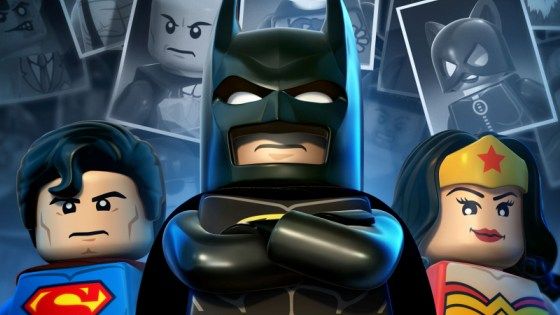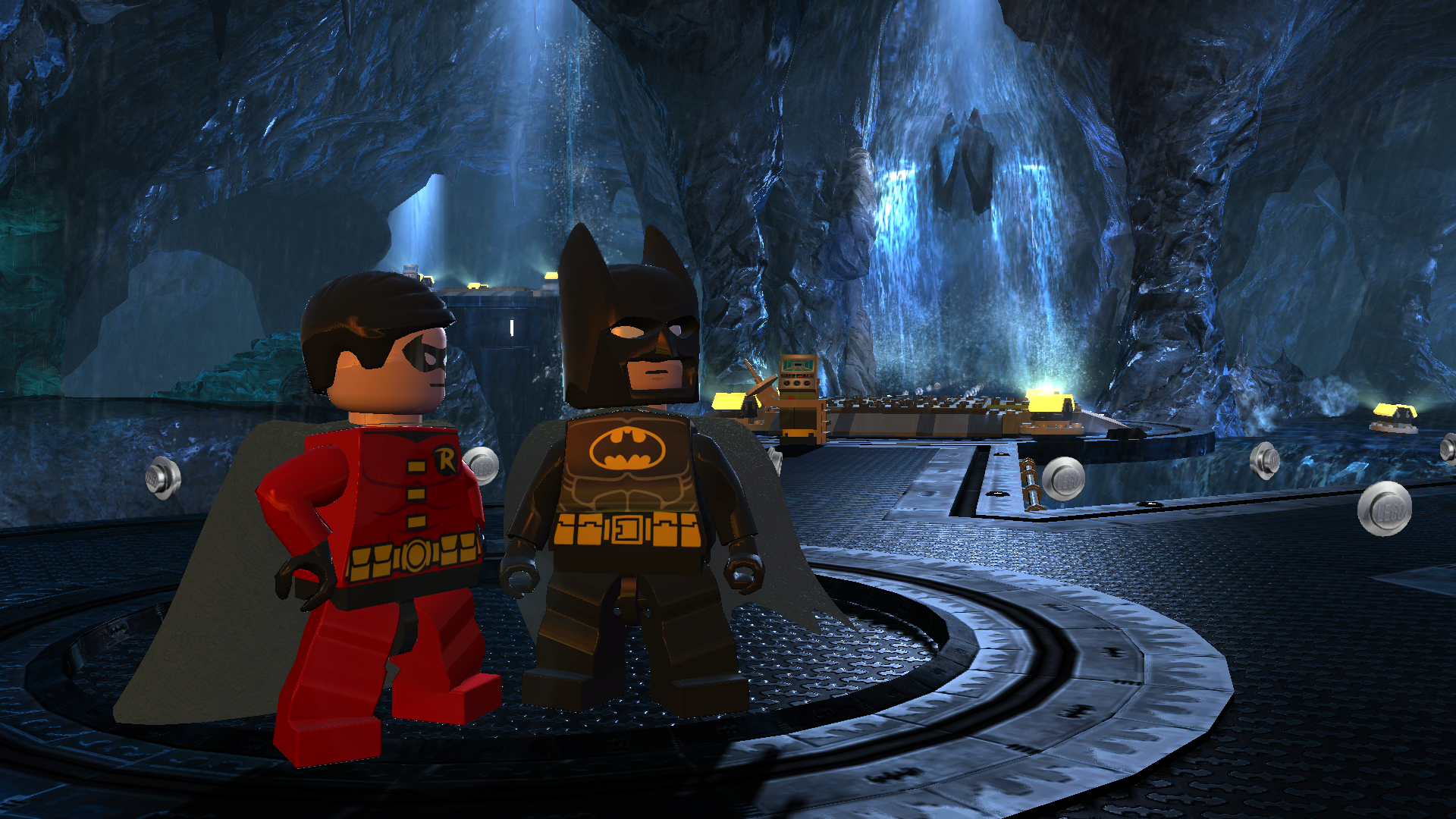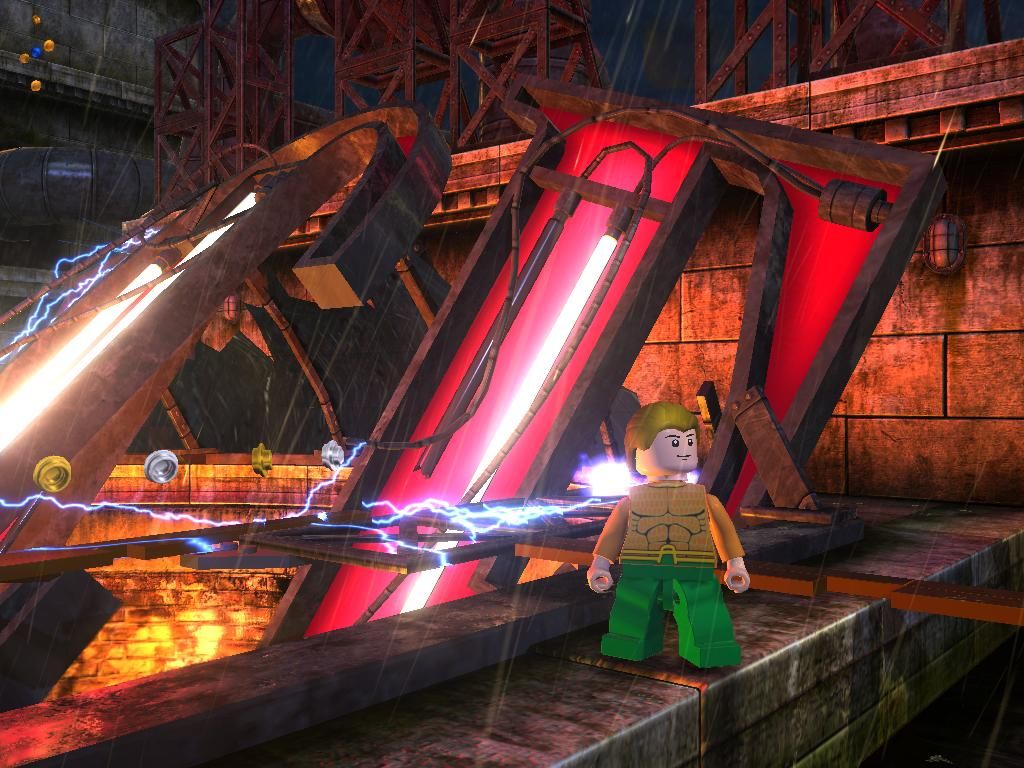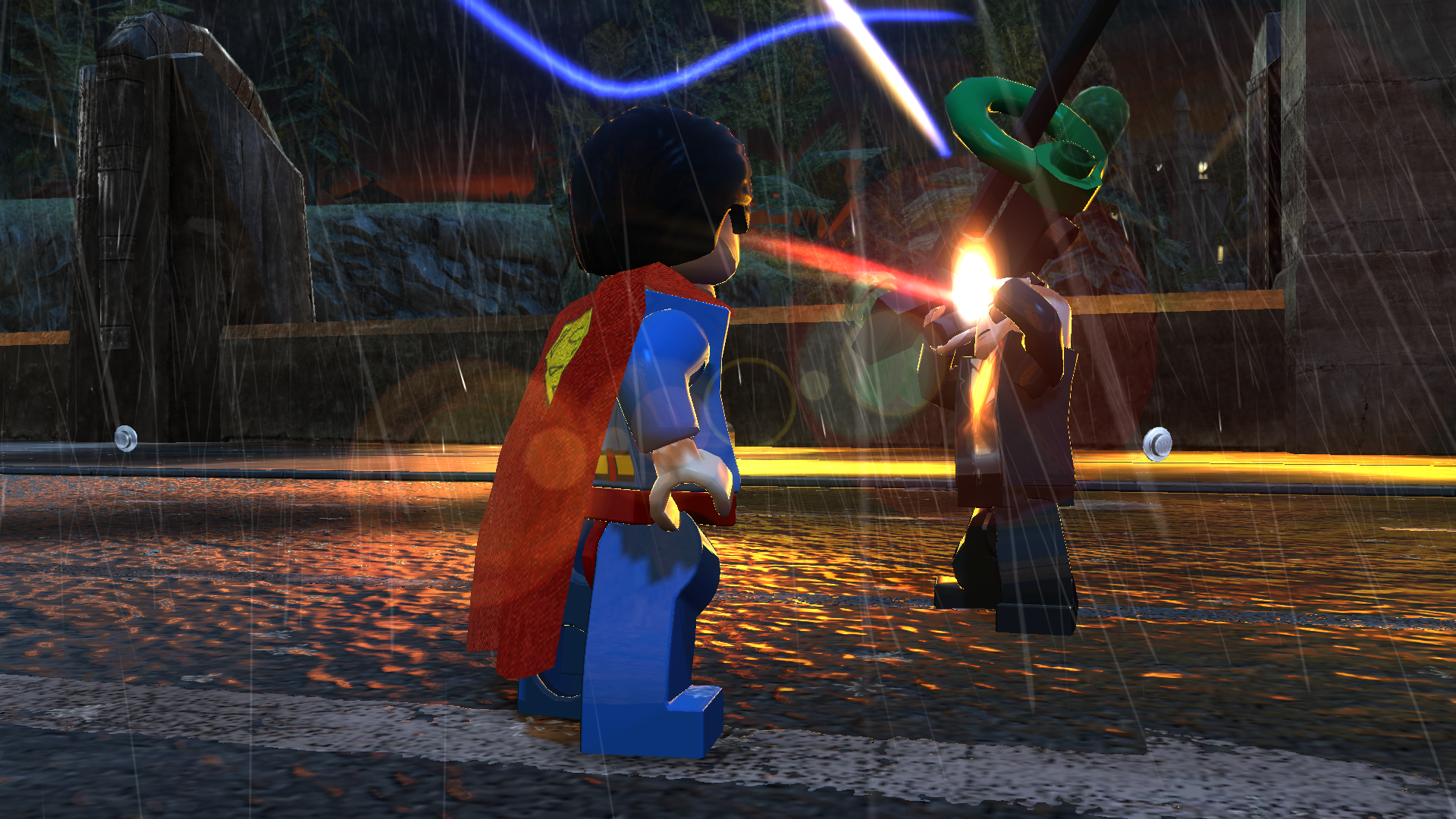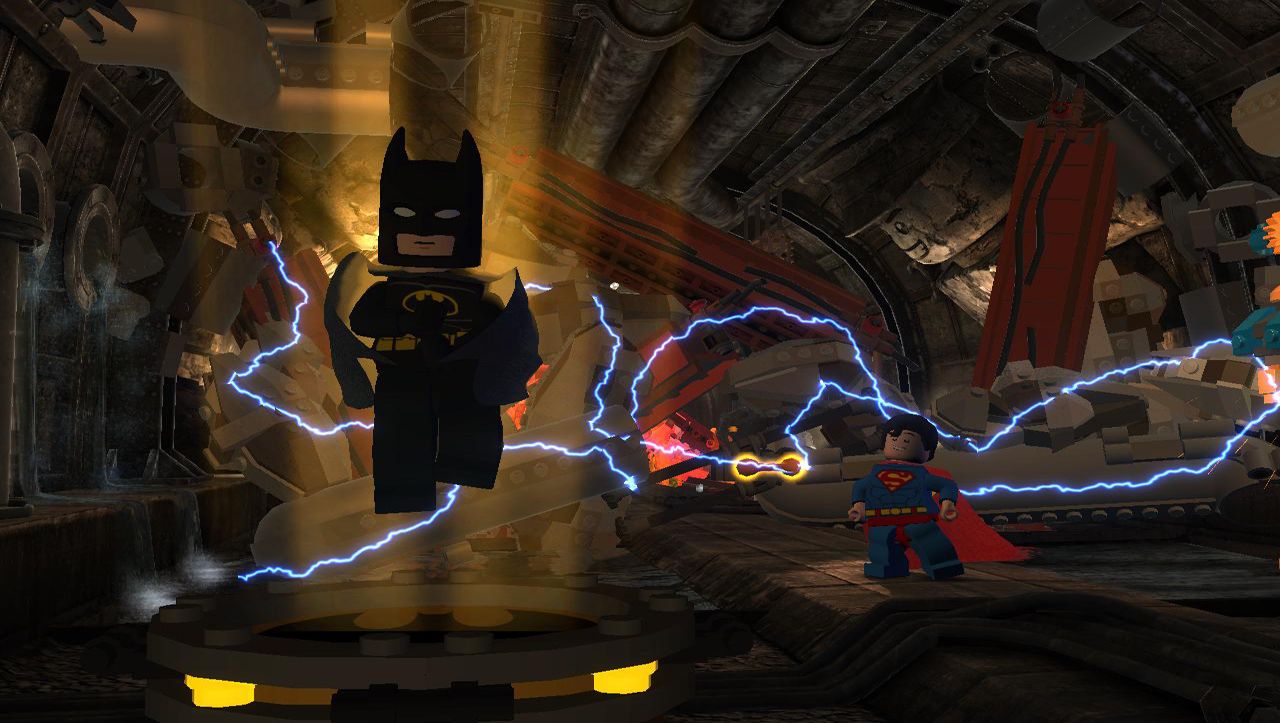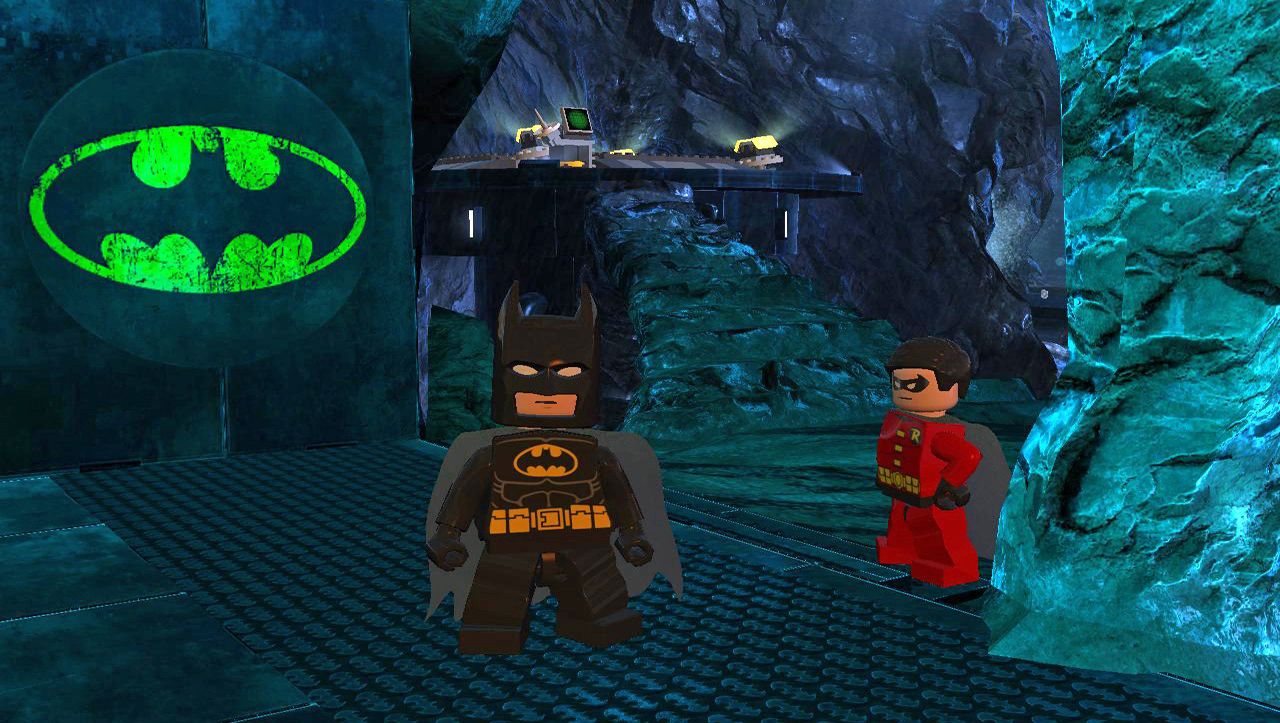One of the most intriguing aspects of Batman’s history is that in his 80 years of continuity, the character has been imagined and reinterpreted in a number of different ways. The very early days of the character had him as the dark protector of the Gotham in a similar fashion to what we know today. The Batman of the 50s and 60s was defined by campy and kid-friendly storylines before a total revamp and return to his darker roots starting in the 70s and beyond.
Batman: Arkham Asylum & City were indicative of a total transformation that Batman has undergone in gaming, and they proved that developers could deliver dark and compelling stories, worthy of the caped crusader. These stories were in line with the darker, more serious tone of the character that has been established in the recent comics and films.
LEGO Batman: The Video Game and LEGO Batman 2: DC Super Heroes succeed at throwing both the campy and dark stories together, delivering an experience that is inclusive for all ages. Ignoring for a minute that the characters, environment, and gameplay in the game are all influenced by and comprised of Legos, LEGO Batman 2 is a great outing for the Dark Knight in more ways than one. The developers over at Traveller’s Tales not only had to surpass the quality of LEGO Batman: The Video Game, but also had to tastefully and correctly deliver the entire Justice League all the while staying true to their original vision. Did they accomplish this? Yes, to a point.
Much like the previous game, LEGO Batman 2 involves a plot that is original, yet heavily influenced by the comics, animated programs, live-action films, and the live-action show of the 1960s. The Joker returns as one of the primary antagonists, along with Lex Luthor.
The game begins with Bruce Wayne, Lex Luthor, and Gotham City’s elite attending a ball in which the ‘Man of the Year’ award is to be presented. Lex Luthor sees it as the key to securing his election as the next president of the United States. After the Joker crashes the party, Luthor – equipped with a weapon that is able to blast apart any Lego construct – sees the value in adding the Joker’s talents to his plot to steal the presidency, and promises to hand him Batman on a silver platter in return. Batman and Robin must race to stop the evil plot of the two villains, and along the way they enlist the help of Superman, and eventually, most of the Justice League.
LEGO Batman 2 is the first game in the series to feature bona fide voice-acting, as the previous games in the LEGO series featured voice-overs that were limited to variations of grunts and sighs. Clancy Brown – the man who voiced Lex Luthor on Superman: The Animated Series – reprises his role as the big, bald, evil man; he is able to portray the same sinister Lex that we know, without clashing with the campy atmosphere of the game. Batman’s voice is provided by video game and anime voice-over veteran, Troy Baker, who also provided the voices for Sinestro and Two-Face. Anyone who provides a voice for the character of Batman – whether it is in animation, video games, or otherwise – will always be compared to Kevin Conroy (Batman’s voice in the animated series of the 90’s and the Arkham video games). Baker transforms himself into the Dark Knight by making his voice very Adam West-esque, while adding in darker tones similar to Conroy’s portrayal. Because of this, he is able to cater to both the serious and funny aspects of the game - he sounds fantastic.
It is hard to fill the shoes of Mark Hammil, who has established himself as the undisputed Joker. Christopher Corey Smith definitely sounds a lot like Hammil, but infuses some of his own original mannerisms into the voice. I found it to be acceptable, and this says a lot, since I have grown up with Hammil’s voice. One of the new voices that I was surprised by was Travis Willingham’s portrayal of Superman, the man of steel. There are no similarities between him and Christopher Reeve or Tim Daly (voice of Superman in the animated series). His version of Superman’s voice is that of a grandstanding, presumptuous, grandiose boy scout. It was perfect, and quite funny.
The gameplay is very much the same as LEGO Batman: The Video Game, with a rock-em-sock-em combat style, supplemented by a variety of puzzles. The most notable additions to the game include a plethora of playable Justice League characters, as well as a vast selection from the Batman family of both heroes and rogues. Some of the bat-suits from the first game return, along with some new ones. Robin’s Acrobat Suit was the most inspired, and it is a lot of fun. Its usefulness and the ingenuity it demands when solving puzzles were second only to the ways in which it augmented Robin’s fighting style. Batman’s new Power Suit was also fun, but not as fun as the Acrobat Suit; however, I did get many chuckles watching the Dark Knight lumber around the battlefield, destroying everything in sight.
The Justice League was not as fleshed out and diversified as I hoped they would be, though there were a couple of gems among them. The first obviously, is Superman. Out of all the JLA members, Traveller’s Tales did their best to utilize his strength and abilities in the gameplay, and it shows. His heat vision, frost breath, x-ray vision, and super strength all have their unique purposes when puzzles need solving; that, and he destroys everything in sight. In the same hand, however, Superman’s physical combat is probably the most poorly designed in the entire game. Each melee attack forces Superman into the air, and any hope of stringing together combos will result in him haphazardly laying waste to every person – friendly or otherwise – and thing in the vicinity; there is no controlling him. The combat of Superman 64 may have had tighter controls…yeah, I went there.
Going into the game, I was apprehensive to how TT would adapt heroes like Green Lantern, Cyborg, and Wonder Woman. Green Lantern especially, his powers are determined by sheer imagination and are seemingly to adapt for a video game, a controlled environment. They got around this by placing glowing green bricks throughout different areas of the game, and when Green Lantern’s ring is activated, different constructs are formed to remedy whatever puzzle. Each construct was fun, unique, and a different nod to the comics, as they were some of Hal Jordan’s most used constructs (i.e. big-ass green glowing hands).
As for the rest of the heroes, well, there was a lot of overlap. Cyborg is a watered down version of Superman; simply take away flight, invincibility, and frost breath. This character’s spot could have easily been given to Martian Manhunter – who was relegated to the JLA’s secretary in the Watchtower – whose powers, while they are similar to Superman’s, have also included telekinesis and shapeshifting. Another possible candidate could have been Aquaman, who is pretty self-explanatory. Wonder Woman also had similar issues, as her lasso has the same functionality as Batman and Robin’s grapplers, and her super strength is comparable to that of Cyborg and Superman. Don't even get me started on the Flash.
Perhaps this was a good thing, because the Justice League was not present in the game until the last few missions leading up to the final act. While this spared me from the redundancy of Cyborg and Wonder Woman, it meant that there was not a lot of involvement from Green Lantern or the Justice League as a whole. The first act follows the same formula as Lego Batman: The Video Game, with Batman and Robin taking on all the A-listers from their rogues gallery, while the second act is more akin to an issue of World’s Finest with Batman, Superman, and Robin. As mentioned earlier, the third act is the true Justice League compilation of characters that were shown in the trailers.
Gotham City is the primary setting during all of this. Instead of being comprised of different dungeons like the first game, LEGO Batman 2 sports a Gotham that is a completely open sandbox. The design is very dark and gothic, much like the Tim Burton films – there are also playful nods to the abysmally toyetic Joel Schumacher films in the forms of giant and hulking Lego statues throughout the city.
Navigating Gotham however, was probably as enjoyable as a self-administered colonic. Getting from point A to point B is handled by a GPS system that is made up of light-blue, almost clear, Lego bricks that are either too hard to spot in the dark streets, or too easy to miss since they blend in with every other Lego brick that litter the streets of Gotham. It is very easy to miss turns and lose your route entirely, and what is worse, is that your vehicle actually obstructs the view of the route. While long periods of travel were not frequent in the game, the occasional nuisance proved to be quite infuriating.
There is a significant degree of replay value once the endgame is complete. You are able to go back to missions and find golden bricks in addition to other secrets and kits. There are over 50 unlockable characters, spanning the villains and heroes of the DC universe. The novelty of this dries up very quickly though, since the meat of the game is in the story and dialogue, not the combat. The story, which comprises only 20 percent of the game.
LEGO Batman 2: DC Super Heroes shines the most during cutscenes, with the campy dialogue and humor that hits the mark at every turn. Some of the best moments included hearing the John Williams score whenever Superman was in flight, the Danny Elfman score from Batman and Batman Returns that is played throughout the entire game (though at times the repetition made me feel like I was in Waco), and even little things like Robin’s absolute infatuation and crush on the man of steel. The desire to reach the next cutscene keeps the combat from being dry or repetitive, it forces you to go on, and the puzzles are challenging as well.
Simply put, this game makes the rest of the titles in the Lego line seem second-rate; Traveller’s Tales outdid themselves. I would have liked more involvement from the Justice League and Superman as a whole, the game would have a more complete feel to it, instead of coming off as LEGO Batman 2: Glorified Cameos by the Rest of the DCU. The gameplay and puzzles still retain their factor of plain fun, which is amplified by the ability to play cooperatively with a friend (local only, unfortunately). Despite the campaign that is brief when compared the overall scope of the game, it is apparent that things can and should go up from here; Traveller’s Tales has set the bar for their next Lego title extremely high.

